Meet illustrator and digital artist Francesca Grech

Tell us about how your practise started?
I unknowingly started book-collecting ever since I was young. I was particularly drawn to children’s fairytale books and I would often purchase a book simply for its design and illustrations. This wasn’t something I thought much of at the time as the books were simply there for me to read and admire. Throughout my secondary and tertiary education, I continued developing my artistic skillset and it wasn’t until I enrolled in a digital arts course at university, where I realised that I could develop a career in illustration. Throughout those 3 years, I worked on growing my artistic voice and skills, while having the opportunity to explore various digital and traditional media, and working with a group of like-minded artists, from different artistic practices.
For my end of year project, I explored tunnel-books and paper-cutting within storytelling. I utilised these three-dimensional media for the creation of a story world and its characters, with the aim of immersing the viewer physically within the story-space, through a life-size recreation and models of the illustrated story world. Since then I have had the opportunity to take part in solo and group exhibitions and also illustrate 3 children’s books. All my experiences up to now have in some way or other helped me grow artistically and personally and I am continuously working to develop and share these stories through my illustrative work.
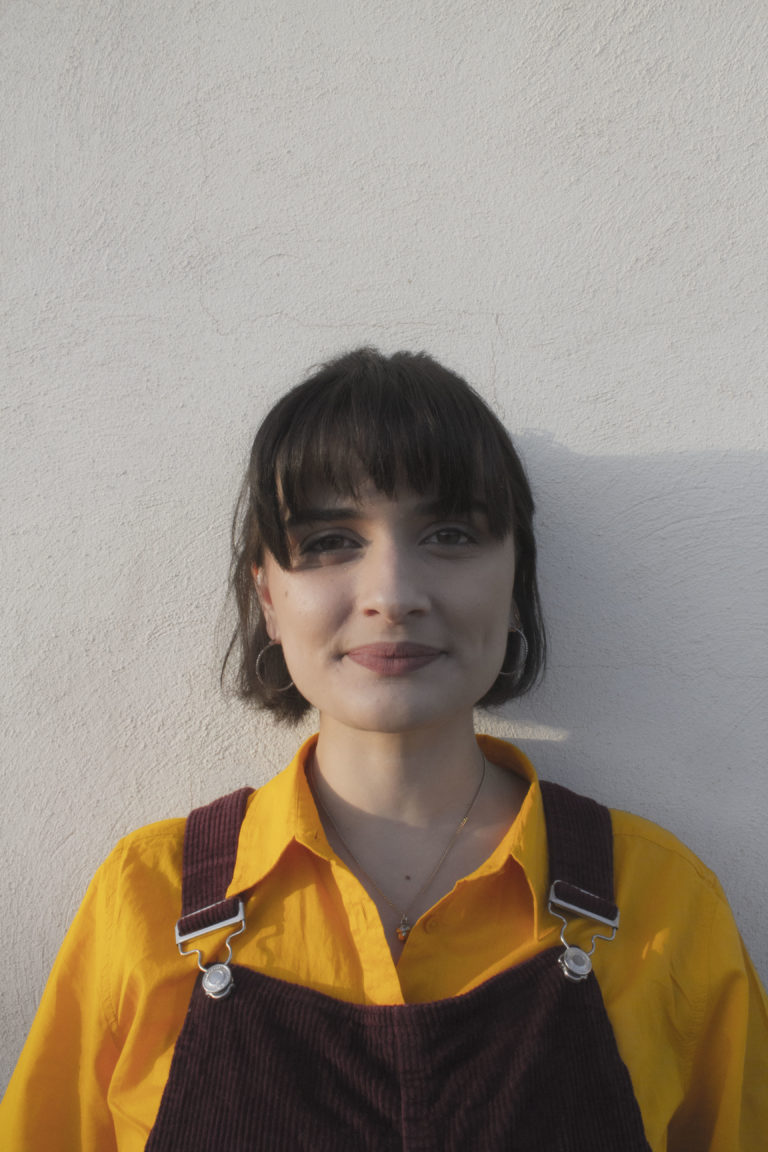
Portrait of Francesca Grech.
What influence has your heritage had on your work?
To me, illustration has stemmed beyond painting a pretty picture for the viewer. It has allowed me to share my point-of-view of the world through characters and whimsical worlds. I rarely appreciated the deep influence my culture and upbringing had on my art until I embraced my ideas and views and allowed them the space to be communicated through my work. When working I often find myself referring to past experiences, spaces and imagery that I subconsciously think of. When I first started illustrating I disregarded these cultural elements in my work as I was driven by the idea of making the work universally-relevant, mostly because I was exposing myself to a lot of work by international artists, and could not really see my identity as a Maltese person in their work. Additionally, I thought that if the idea is so easily accessible, is it really a good idea? I eventually grew to appreciate and understand that these personal influences are in fact what made the art I was looking at so unique.
“Illustration has allowed me to share my point-of-view of the world through characters and whimsical worlds.”
Instead of trying to emulate what I thought would be enjoyed by the viewer, I shifted to illustrating images of things I would have experienced, like the scrawny pigeon I came across during an afternoon walk, the colourful, and unfortunately diminishing, architecture of old Maltese houses, characters inspired by people I would have come across. For instance in my project ‘Distorja’, I had characters inspired by stereotypical figures, such as the man in the white undervest, carrying a bird in a cage, or that of the ‘sindikajri’, sitting behind closed blinds, watching anyone who passes in front of their house. In ‘Qatra Qatra’ I designed the characters with imagery like the ‘te fit-tazza’ instead of a teacup and patterns from doilies found in almost any traditional Maltese family home’s library of framed family-events. Culture and family experiences are all elements that I feel give the work more relevance and definitely a more honest interpretation, and it is these influences which often serve as a foundation for my work.
Favourite artist/s? Why and how they’ve influenced your work?
When researching for a project, I tend to look at various sources to generate ideas. I find Art Deco work such as Marjorie Miller’s and Aubrey Beardsley’s illustrations very inspiring. I also refer to work by paper artists such as Hari and Deepti and Andrea Deszo and illustrators, Roman Muradov for simplicity and focus on line, Sonia Alins and Anastasia Suvorova, whose work is a wonderful example of harmony in both composition and colour. Studying Mannerist figures from artists such as Parmigianino are also a common go-to for me. Each project has its own process and the sources of inspiration are greatly dependable on its uniqueness.
The mentioned artists are normally my go-to references when I find myself uninspired during the process. Sometimes I also refer to other forms of art such as fashion, writing and film. Literature has definitely been a main source of inspiration, especially classical works like Alice in Wonderland and the Little Prince. Animated movies from Laika and Cartoon Saloon are also a common reference point, particularly when developing characters. I tend to look for new work and media to research and study when generating ideas for projects, as I feel it helps to provide me with a new perspective each time and no two processes are the same. For instance I would focus on mark-making and line in one illustrated project, while focusing on form through paper-cutting in another. My aim is to ultimately produce a result that is both honest and relevant to the viewer.
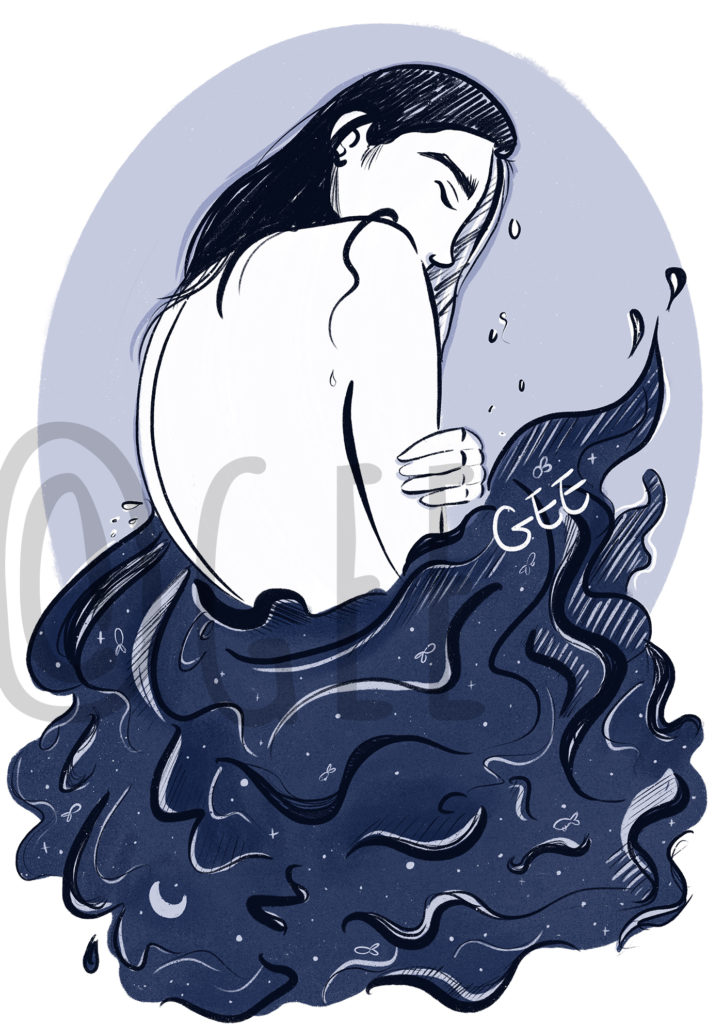
Tell us a bit more about the piece you contributed to ‘The 20s Take Two’ exhibition. What was the inspiration? What was your process? What techniques did you use?
‘Bubbling’ was mainly inspired by the recent emergence of the verb ‘to bubble’, and the respective social bubbles we are constrained to. One of the main effects many have experienced from this pandemic, is the isolation that it has forced upon people and communities. The illustration takes this idea of the social bubble and its isolation literally, with people utilising the bubble as a physical way to distance themselves from others. The buildings, all on stilt-like structures are also distanced from both neighbouring houses and civilisation in general. The primary focus of the piece was the almost surreal isolation and reconfiguration of what human interaction within communities was changed into. During the initial stages, I collated some of the most memorable experiences from this pandemic, such as the panic-shopping most supermarkets experienced in the early covid days in 2020, the overstocking of toilet paper, food, masks and sanitiser, the normalisation of zoom schooling and meetings and the integration of face coverings to our everyday looks. The face mask in particular became quite the creative staple within people’s wardrobes, which led me to research face and body coverings worn during earlier pandemics, with particular reference to the 1918 Spanish Influenza. I created an image bank of photos and imagery, as well as extracts from Italo Calvino’s work, in particular from his book, ‘Invisible Cities’, which has been a great source of inspiration in my work ever since I was introduced to his text. Another source which I often turn to for ideas, is Haute Couture fashion and its extravagant, sometimes bizarre looks.
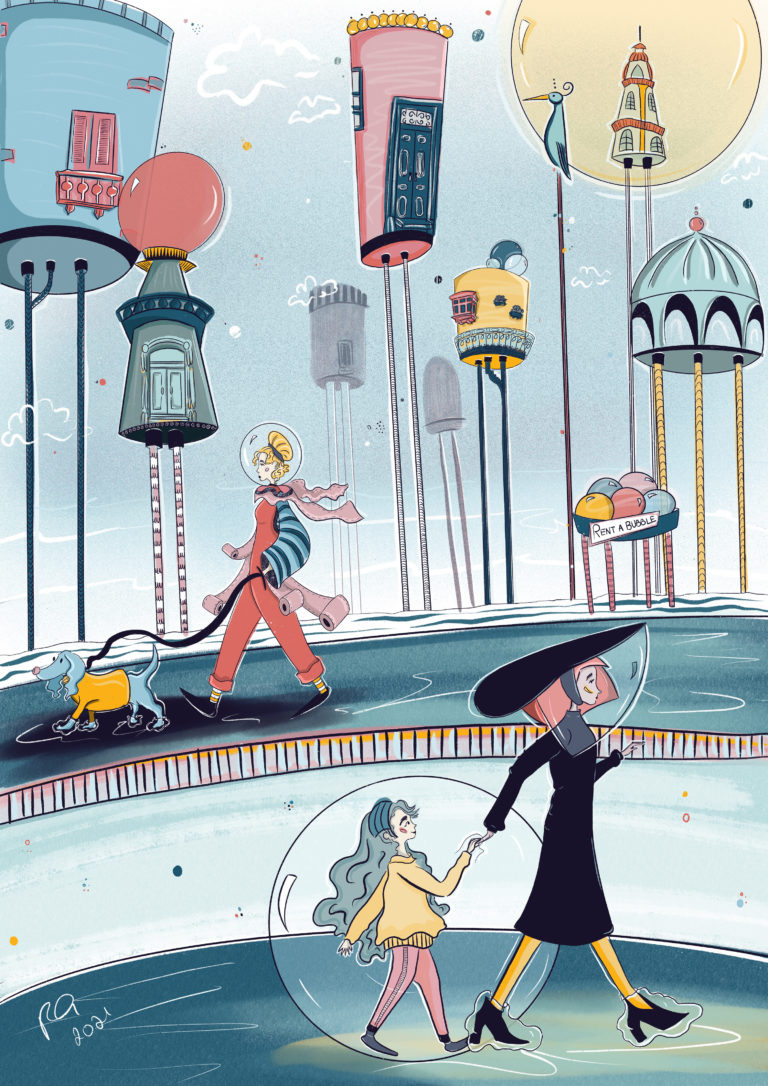
‘Bubbling’ by Francesca Grech. Exhibited at Take Two Exhibition
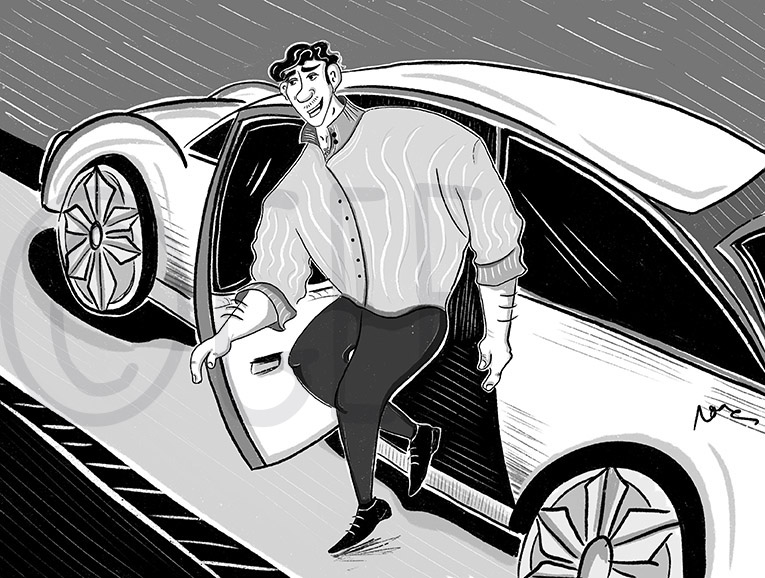
The primary focus of the piece was the almost surreal isolation and reconfiguration of what human interaction within communities was changed into. During the initial stages, I collated some of the most memorable experiences from this pandemic, such as the panic-shopping most supermarkets experienced in the early covid days in 2020, the overstocking of toilet paper, food, masks and sanitiser, the normalisation of zoom schooling and meetings and the integration of face coverings to our everyday looks. The face mask in particular became quite the creative staple within people’s wardrobes, which led me to research face and body coverings worn during earlier pandemics, with particular reference to the 1918 Spanish Influenza. I created an image bank of photos and imagery, as well as extracts from Italo Calvino’s work, in particular from his book, ‘Invisible Cities’, which has been a great source of inspiration in my work ever since I was introduced to his text. Another source which I often turn to for ideas, is Haute Couture fashion and its extravagant, sometimes bizarre looks.
“The face mask in particular became quite the creative staple within people’s wardrobes, which led me to research face and body coverings worn during earlier pandemics, with particular reference to the 1918 Spanish Influenza.”
The next point of research was, mainly what the world will look like, once having experienced so much isolation and separation and in some cases fear and worry. Social distancing, quarantine, face masks, bubbles, have all become common terms within our everyday lives. So what will a covid-free society look like, now that human interaction and socialisation has become such a risky activity? This led to the next stage in my work: sketching out ideas for characters dressed in covid-inspired attire, while being socially distant in a sophisticated and socially acceptable way. The bubble became the ultimate form of protection for both humans and buildings alike, it is something one can rent or buy in a similar way that car and bike sharing is, footwear and paws are bubbled to avoid any germs getting into the house, faces are bubbled, even a young child is bubbled to secure her protection. The bubble has been adapted to suit the aesthetic and health-related needs of the individual within society. The city almost brought on a Jetsons-inspired futuristic look, all while reflecting elements and colours found within Maltese architecture. For this particular work, I mainly utilised inks and pencil for sketches and exploration, and created the final work through digital painting and drawing. The illustration is a whimsical and surreal vision of the world post-covid, which aims to deliver a more positive outlook of the situation to the viewer.
Connect and keep updated with Francesca’s latest updates on her ARTZ ID profile.
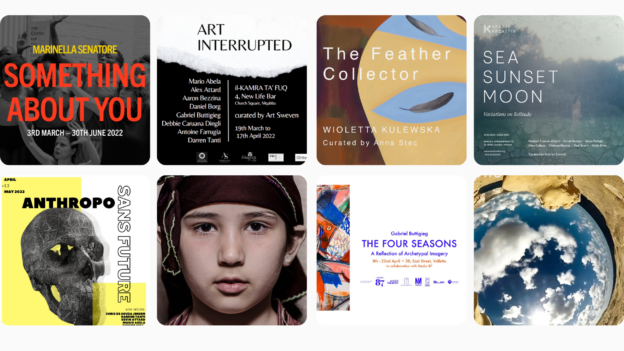


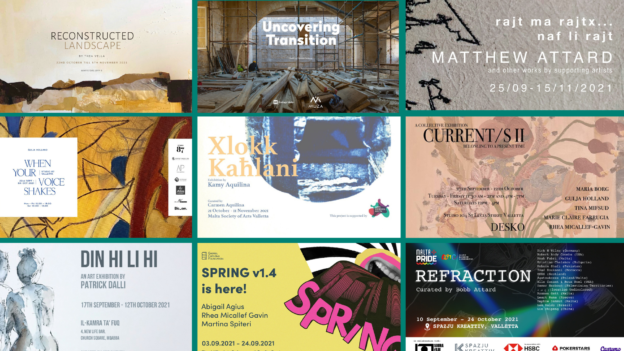

[…] collaboration with Christine X Gallery and Artpaper Malta in April 2021.Virtual Exhibition tour hereHere is an interview discussing my process and inspiration for […]